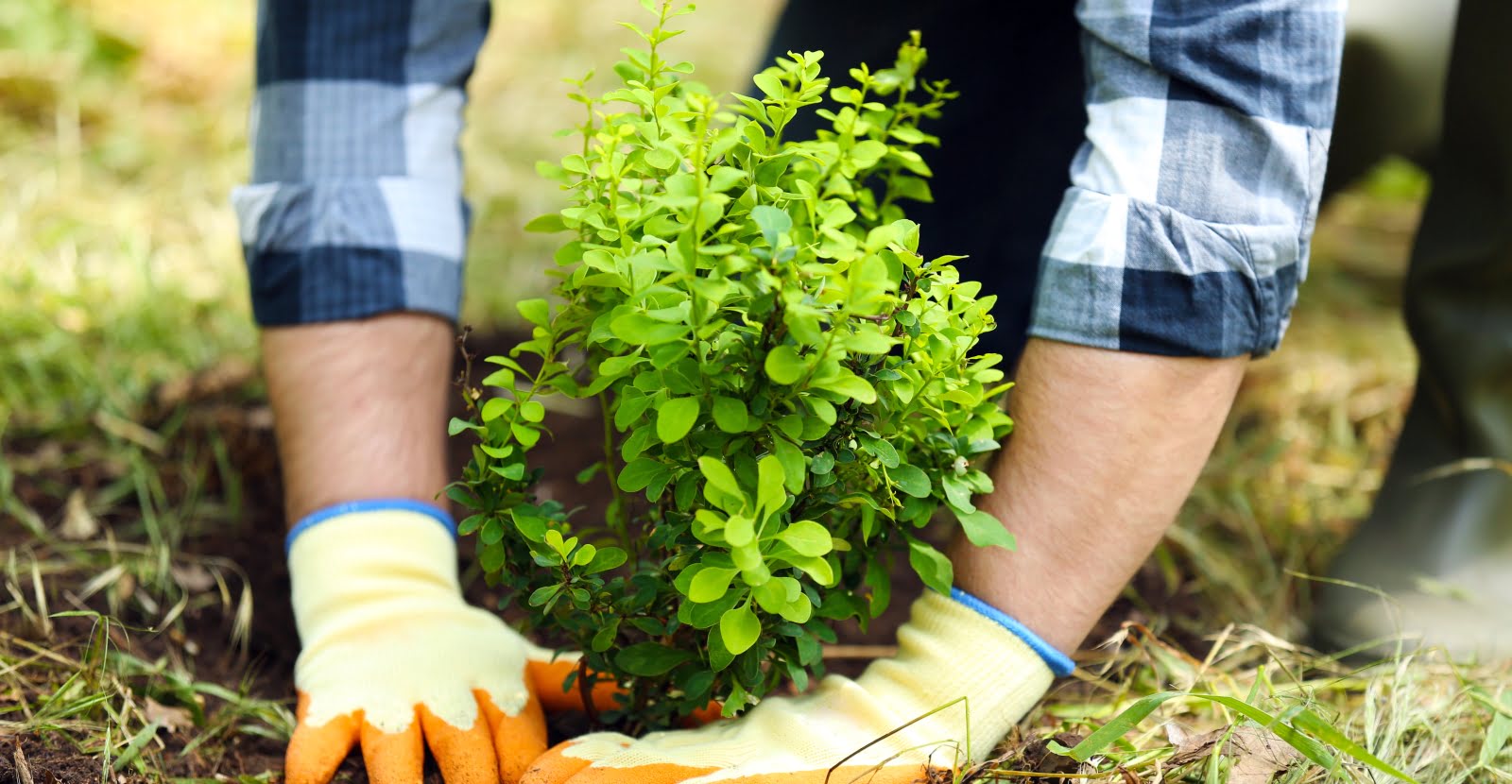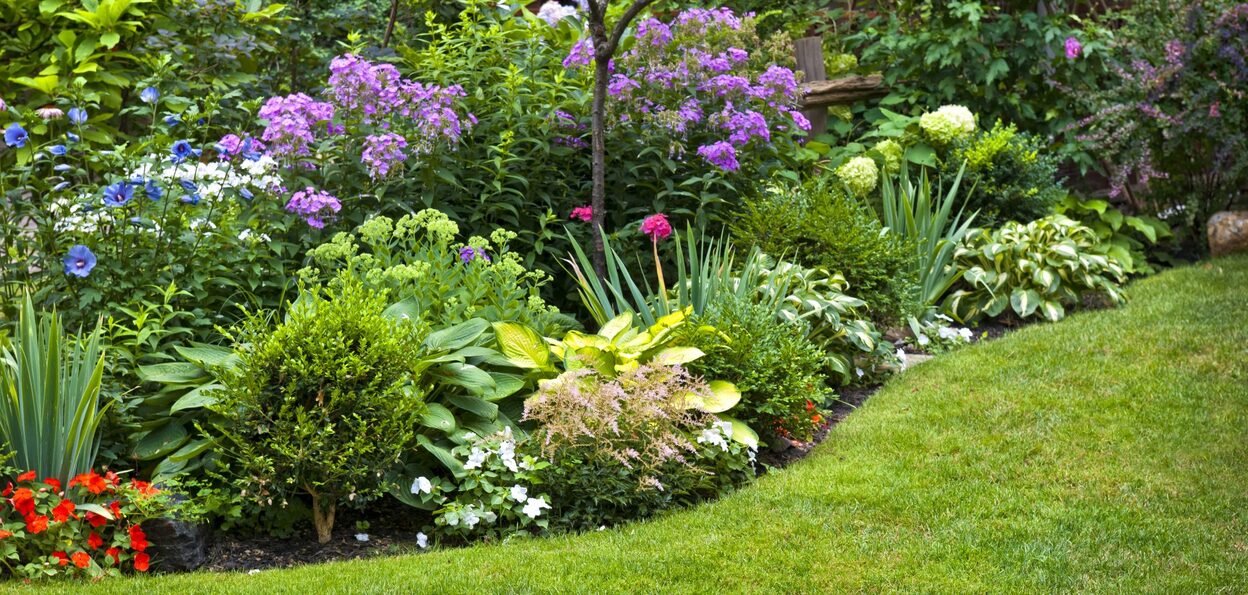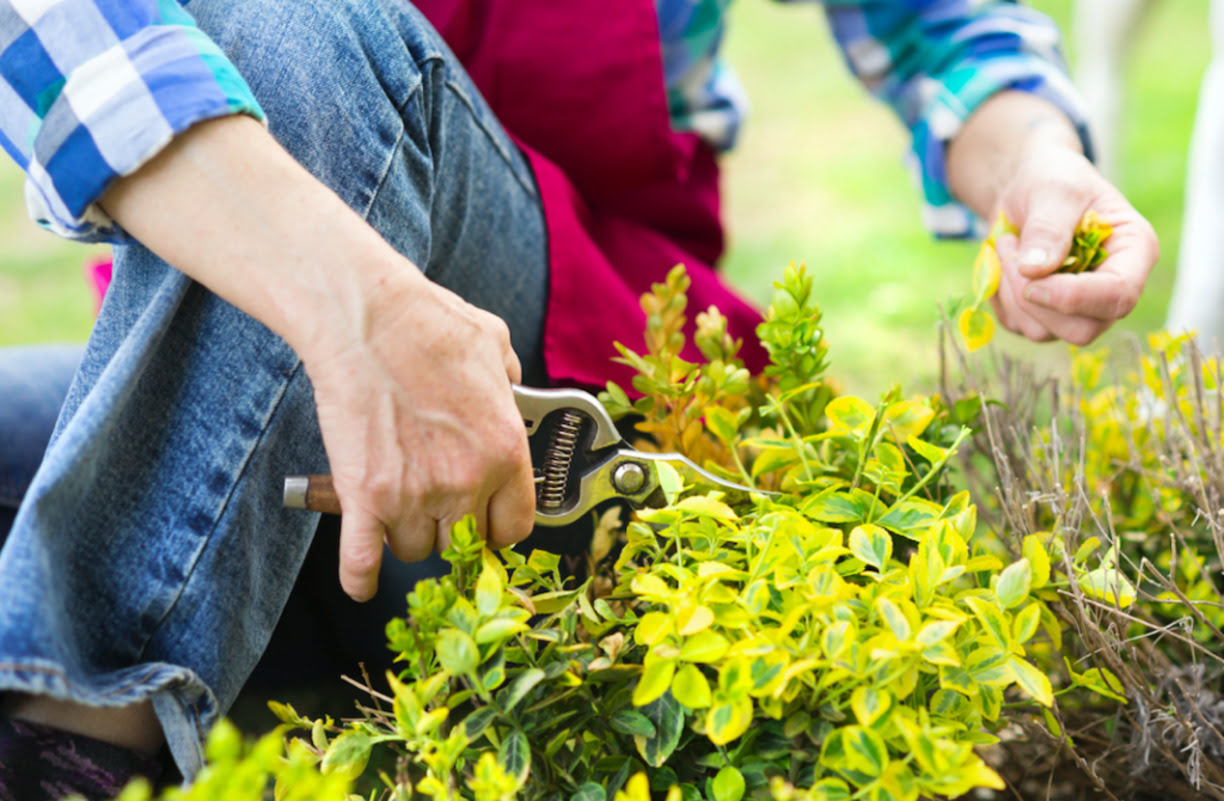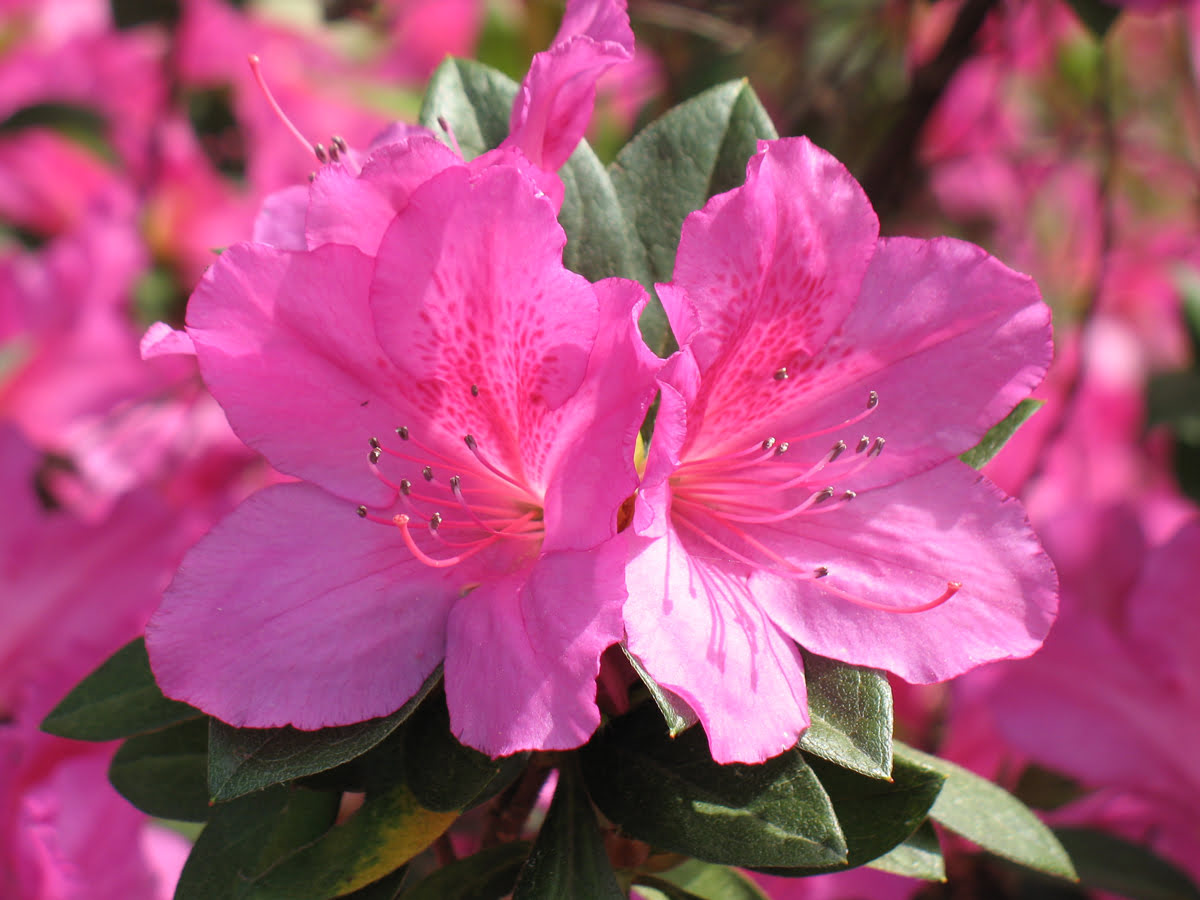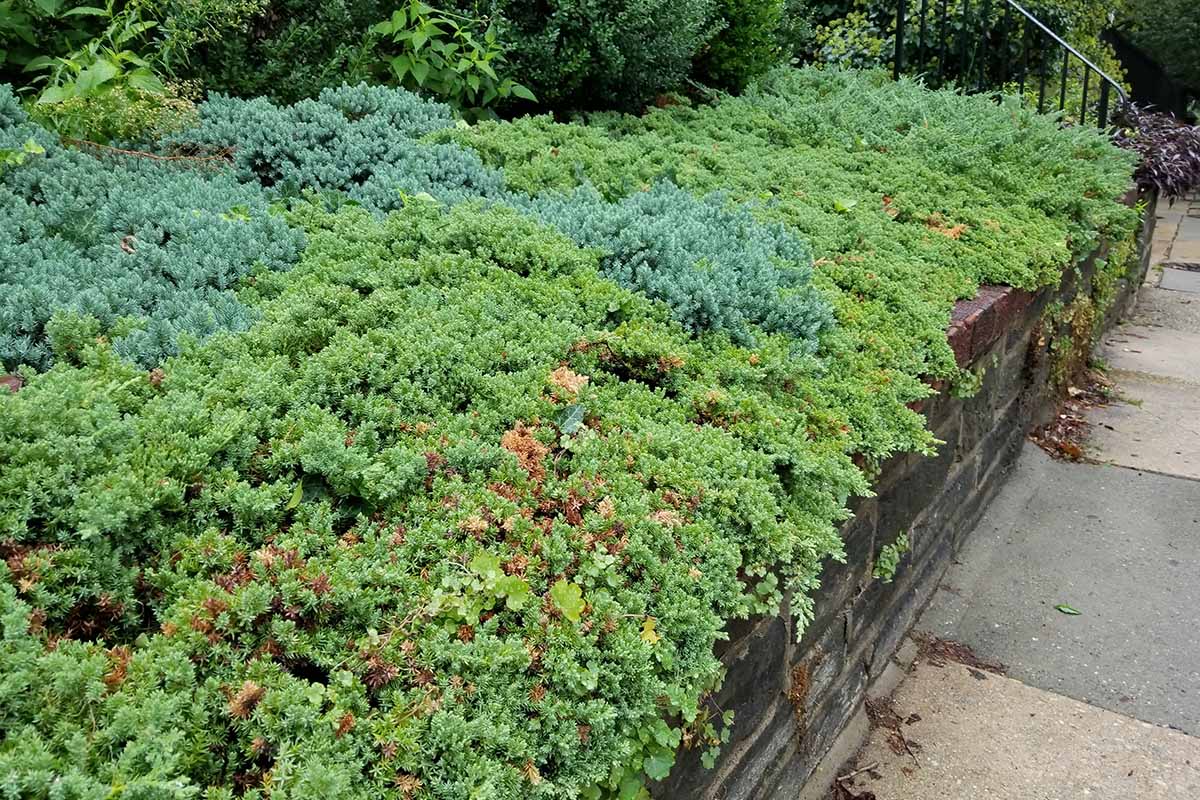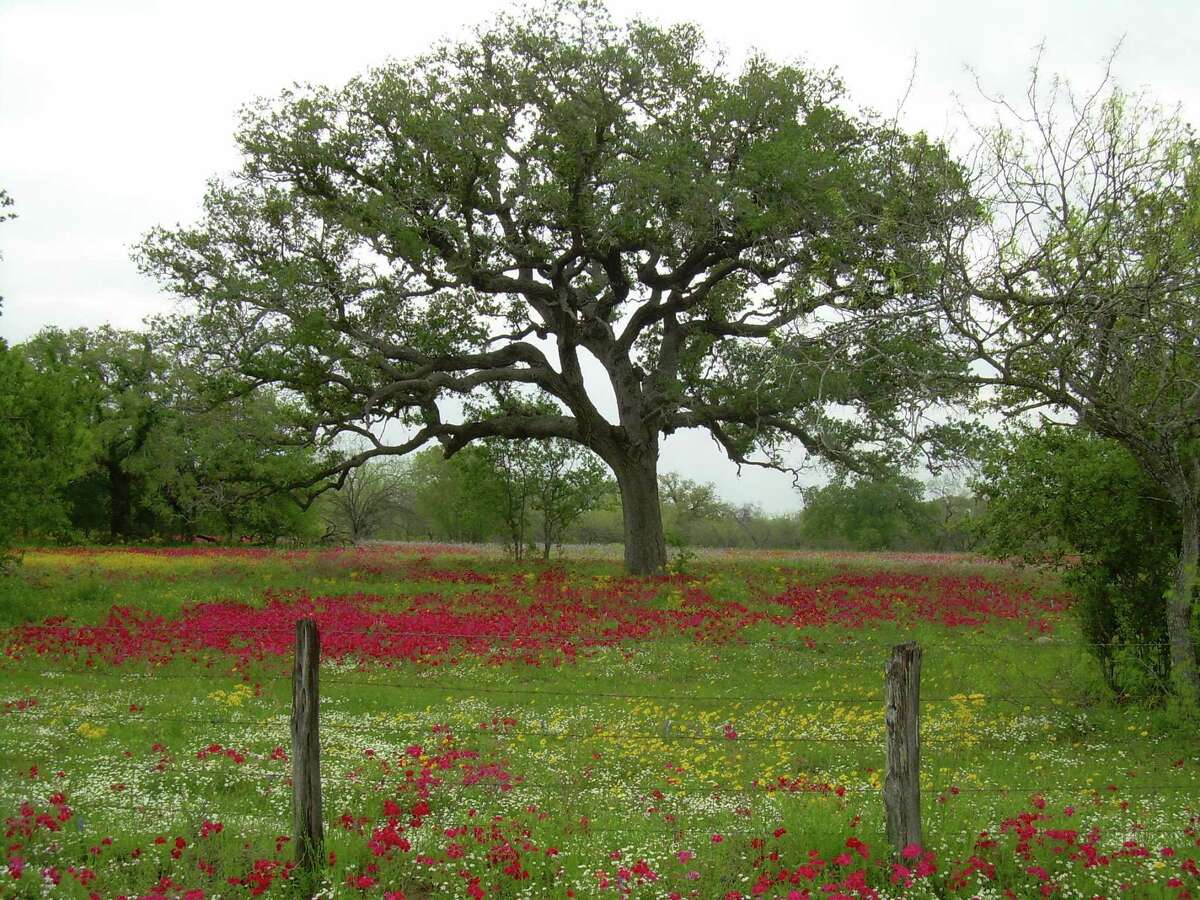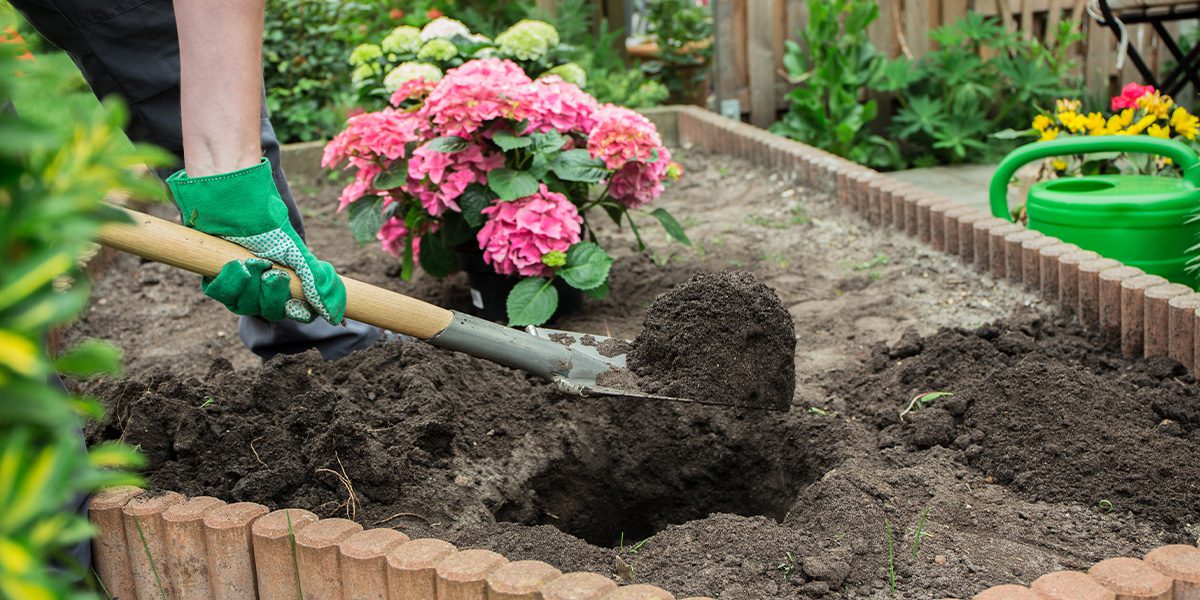Home>Gardening Techniques>Seasonal Gardening>When To Plant Shrubs In Texas
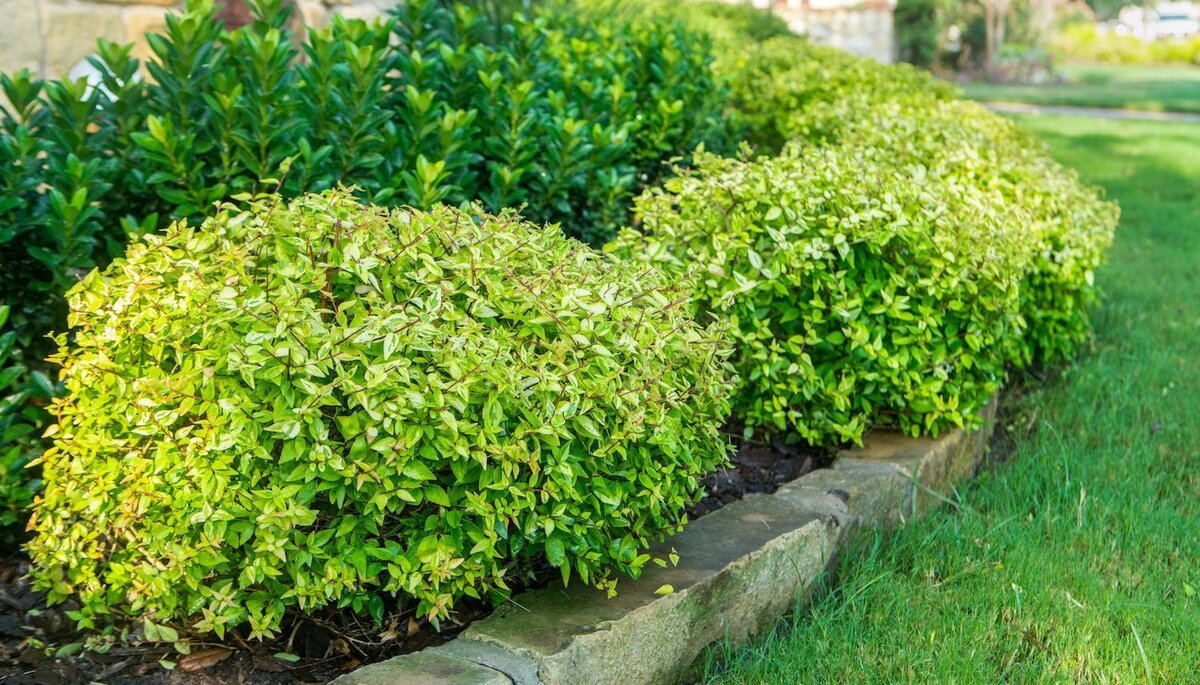

Seasonal Gardening
When To Plant Shrubs In Texas
Modified: February 7, 2024
Looking to plant shrubs in Texas? Learn about seasonal gardening and find out the best time to start your shrub planting project in the Lone Star State.
(Many of the links in this article redirect to a specific reviewed product. Your purchase of these products through affiliate links helps to generate commission for Chicagolandgardening.com, at no extra cost. Learn more)
Table of Contents
Introduction
Gardening in Texas offers a unique opportunity to enjoy beautiful landscapes throughout the year. With its diverse climate and long growing season, Texas provides ample opportunities for gardening enthusiasts to engage in seasonal gardening. One of the key elements of a vibrant garden is the selection and timing of planting shrubs. Whether you are a seasoned gardener or a beginner, understanding the best time to plant shrubs in Texas is essential for their successful establishment and growth.
Texas is known for its hot summers, mild winters, and variable weather patterns. The expansive size of the state also means that different regions experience slightly different climatic conditions. These factors influence the ideal planting times for shrubs, as they need to be able to withstand the demands of the Texas climate.
When considering the best time to plant shrubs in Texas, several factors need to be taken into account. These factors include temperature, rainfall, soil moisture, and the specific requirements of the shrub species. By understanding these factors, gardeners can make informed decisions and maximize the chances of success with their shrub plantings.
This article will provide valuable insights on the best times to plant shrubs in Texas, considering the different seasons and regional variations. Whether you are looking to add color to your garden, create a privacy screen, or enhance the overall aesthetics of your outdoor space, understanding the optimal planting times will contribute to the long-term success of your shrubs.
Understanding the Climate in Texas
Before diving into the best times to plant shrubs in Texas, it is important to have a good understanding of the climate variations across the state. Texas is known for its diverse climate, ranging from humid subtropical in the east to arid desert in the west. This wide range of climate zones means that different regions of Texas experience different growing conditions.
In general, Texas experiences hot summers, mild winters, and variable weather patterns throughout the year. The state is prone to high temperatures, droughts, and occasional cold snaps. These climatic factors can have a significant impact on the growth and survival of shrubs.
East Texas typically receives more rainfall compared to other parts of the state, resulting in a more humid climate. Central Texas experiences a mix of hot and humid summers, while West Texas is characterized by dry, arid conditions.
It is important to note that microclimates can also exist within regions. Factors such as elevation, proximity to bodies of water, and urban heat island effects can create localized variations in temperature and rainfall.
Understanding the specific climate conditions in your area, as well as the microclimate of your garden, is crucial in determining the best times to plant shrubs. By aligning your planting schedule with favorable weather conditions, you can provide the best environment for shrub establishment and growth.
Factors to Consider When Planting Shrubs
When it comes to planting shrubs, there are several important factors to consider to ensure their successful establishment and growth. By taking these factors into account, you can create an optimal environment for your shrubs to thrive.
1. Temperature: Different shrub species have different temperature requirements. It is essential to choose shrubs that are well-suited to the temperature range of your region. Consider the hardiness zones defined by the United States Department of Agriculture (USDA) to determine which shrubs are most suitable for your area.
2. Soil Type: The type of soil in your garden can greatly impact the growth of shrubs. Some shrubs prefer well-drained soil, while others thrive in clay or loamy soil. Conduct a soil test to determine the pH level and nutrient content of your soil. This will help you select shrubs that are compatible with your soil type and make any necessary amendments.
3. Sun Exposure: Most shrubs require a certain amount of sunlight to thrive. Take note of the sun exposure in your garden, as well as any areas of shade or partial shade. This will help you choose shrubs that are suited to the available light conditions.
4. Water Needs: Consider the water requirements of different shrub species. Some shrubs are drought-tolerant, while others require regular watering. Take into account the natural rainfall patterns in your area and the availability of irrigation options.
5. Mature Size: It is important to consider the mature size of shrubs before planting. Make sure you have enough space to accommodate the growth of the shrubs without crowding other plants or structures in your garden.
By considering these factors, you can select shrubs that are well-suited to your climate, soil conditions, and available resources. This will increase the chances of success and ensure the long-term health and beauty of your shrubs.
Best Time to Plant Shrubs in Texas
Choosing the right time to plant shrubs is crucial for their successful establishment and growth in Texas. The timing will depend on several factors, including the specific shrub species, the region of Texas you are in, and the prevailing weather conditions. Let’s explore the best times to plant shrubs in Texas based on the different seasons.
Spring Planting: Spring is generally considered an ideal time for planting shrubs in Texas. As the temperatures begin to warm up and the threat of frost diminishes, shrubs have a better chance of establishing their root systems before the hot summer months. Early spring, before the peak heat arrives, is an opportune time to plant shrubs and allow them to acclimate to their new environment.
Fall Planting: Another favorable time to plant shrubs in Texas is during the fall season. The cooler temperatures and increased rainfall provide optimal conditions for root development. By planting in the fall, shrubs have a longer period to establish themselves before the stress of summer heat. Fall planting can also help shrubs develop a stronger root system, increasing their chances of surviving through the following summer.
Winter Planting: While winters in Texas can be mild, it is still possible to plant certain shrubs during this time. However, it is important to select cold-hardy shrubs that can withstand any potential frost or freezing temperatures. Winter planting is most successful in the southern regions of Texas, where the temperatures remain relatively mild.
Summer Planting: Planting shrubs during the hot summer months in Texas can be challenging due to the extreme heat and limited rainfall. However, if necessary precautions are taken, such as providing ample water and shade, it is still possible to plant shrubs during this time. It is important to choose heat-tolerant shrub species and consistently monitor their watering needs.
It is worth noting that regional variations within Texas can impact the best planting times. For example, the Panhandle region experiences colder winters compared to the Gulf Coast. Consult with local gardening resources or seek advice from professionals to determine the most appropriate planting times for your specific region within Texas.
By choosing the right season for planting shrubs and considering regional factors, you can set the stage for healthy growth and ensure that your shrubs thrive in the diverse climate of Texas.
Spring Planting
Spring is an optimal time for planting shrubs in Texas. As temperatures start to warm up and the threat of frost diminishes, the soil becomes more workable, creating favorable conditions for shrubs to establish their root systems. Here are some key considerations for spring planting in Texas:
- Timing: Early spring, before the peak heat arrives, is an ideal time for planting shrubs. This allows the shrubs to acclimate to their new environment before the hot summer months. Aim to plant shrubs in Texas between late February and early April, depending on the specific region and weather conditions.
- Choosing Shrubs: Select shrubs that are suitable for the Texas climate and the specific region you are in. Consider factors such as sun exposure, soil moisture, and the mature size of the shrubs. Native and drought-tolerant species are often good choices for the harsher Texas conditions.
- Soil Preparation: Prepare the soil before planting by removing any weeds or grass and loosening the soil to improve drainage. Incorporate organic matter, such as compost, to enrich the soil and provide nutrients for the shrubs.
- Planting Technique: Dig a hole that is slightly wider and the same depth as the root ball of the shrub. Gently place the shrub in the hole, ensuring that it is at the same level as the surrounding soil. Backfill the hole with soil and firm it gently around the base of the shrub.
- Watering and Mulching: After planting, water the shrub thoroughly to settle the soil and promote root establishment. Apply a layer of mulch around the base of the shrub to conserve moisture and suppress weed growth. Keep the soil consistently moist but not waterlogged.
- Monitoring: Regularly monitor the newly planted shrubs for signs of stress, such as wilting or yellowing leaves. Adjust watering as needed and provide shade during particularly hot periods to protect the shrubs from extreme heat.
By planting shrubs in the spring, you provide them with the opportunity to establish strong root systems and grow vigorously throughout the growing season. The moderate temperatures and increased rainfall during this time create favorable conditions for healthy shrub growth in Texas.
Fall Planting
Fall is another ideal time for planting shrubs in Texas. As the heat of summer starts to subside and cooler temperatures prevail, shrubs have the opportunity to establish their root systems before the arrival of winter. Here are some key considerations for fall planting in Texas:
- Timing: The best time for fall planting in Texas is typically between September and November, depending on the specific region and weather patterns. It is advantageous to plant shrubs early in the fall to give them enough time to establish roots before the onset of colder weather.
- Selecting Shrubs: Choose shrubs that are suitable for the Texas climate and the specific region you are in. Consider factors such as sun exposure, soil type, and the mature size of the shrubs. Look for varieties that are known for their ability to withstand colder temperatures and potential frost.
- Soil Preparation: Prepare the soil by removing any weeds or grass and loosening it for better drainage. Amend the soil with organic matter, such as compost, to improve its fertility and structure. This will provide a strong foundation for the shrubs to establish their roots.
- Planting Technique: Dig a hole that is wider and slightly shallower than the root ball of the shrub. Place the shrub in the hole, ensuring that it is at the same level as the surrounding soil. Backfill the hole with soil and gently firm it around the base of the shrub.
- Watering and Mulching: After planting, water the shrub thoroughly to settle the soil and encourage root growth. Apply a layer of mulch around the base of the shrub to retain moisture, regulate soil temperature, and suppress weed growth. Monitor the soil moisture and water as needed during the fall season.
- Cold Protection: As winter approaches, consider providing extra protection for newly planted shrubs. Wrap the shrubs with burlap or cover them with frost cloth during periods of freezing temperatures to shield them from extreme cold.
Fall planting allows shrubs to establish their root systems during the cooler months, ensuring they are well-prepared to absorb nutrients and moisture in the spring. The milder temperatures and increased rainfall of the fall season create favorable conditions for successful shrub establishment and growth in Texas.
Winter Planting
While winters in Texas can be relatively mild, it is still possible to plant shrubs during this time. However, it is important to choose cold-hardy shrub species that can withstand potential frost or freezing temperatures. Here are some key considerations for winter planting in Texas:
- Timing: Winter planting in Texas is typically best suited for the southern regions where the temperatures remain relatively mild. It is crucial to monitor weather forecasts and choose days when the ground is not frozen and the likelihood of extreme cold is minimal.
- Cold-Hardy Shrubs: Select shrub species that are known for their tolerance to cold temperatures. Look for varieties that are rated for your specific hardiness zone in Texas. Consult with local nurseries or gardening experts to determine the most suitable shrubs for winter planting in your region.
- Soil Preparation: Prepare the soil by removing weeds or grass and loosening it for better drainage. Incorporate organic matter, such as compost, to improve the soil’s fertility and structure. This will help provide a favorable growing environment for the shrubs.
- Planting Technique: Dig a hole that is wider and slightly shallower than the root ball of the shrub. Gently place the shrub in the hole, ensuring that it is at the same level as the surrounding soil. Backfill the hole with soil and gently firm it around the base of the shrub.
- Watering: Water the shrub thoroughly after planting to settle the soil and encourage root establishment. Although the water requirements may be lower during the winter, it is still important to monitor soil moisture and provide supplemental watering when needed.
- Protection: Provide additional protection for newly planted shrubs during periods of freezing temperatures. Apply a layer of mulch around the base to insulate the roots and help retain moisture. Consider using frost blankets or burlap to shield the shrubs from extreme cold and wind.
Winter planting in Texas requires careful consideration of cold-hardy shrubs and proper protection against freezing temperatures. By choosing the appropriate varieties and providing the necessary care, you can successfully establish shrubs during the winter months and enjoy their beauty and benefits in your garden.
Summer Planting
Planting shrubs during the hot summer months in Texas can be challenging due to the extreme heat and limited rainfall. However, with proper precautions and care, it is still possible to successfully plant shrubs during this time. Here are some key considerations for summer planting in Texas:
- Selection of Heat-Tolerant Shrubs: Choose shrub species that are known for their ability to withstand high temperatures and drought conditions. Look for varieties that are native to Texas or are specifically adapted to the region. These shrubs have developed the necessary characteristics to cope with the summer heat.
- Timing: It is best to avoid planting shrubs during the hottest months of summer when temperatures are at their peak. Instead, aim to plant in early summer or late summer when there is a better chance of cooler temperatures and increased rainfall. Monitor weather forecasts and choose days when temperatures are not excessively high.
- Site Preparation: Prepare the planting site by removing weeds or grass and loosening the soil to improve drainage. Incorporate organic matter, such as compost, to enhance the soil’s ability to retain moisture and provide nutrients.
- Irrigation: Proper and consistent watering is crucial for summer-planted shrubs. Water deeply and frequently to ensure that the shrubs receive enough moisture. Consider using a drip irrigation system or soaker hoses to deliver water directly to the root zone and minimize water wastage.
- Mulching: Apply a layer of organic mulch around the base of the shrubs to conserve soil moisture, regulate soil temperature, and suppress weed growth. Mulch acts as an insulating barrier, reducing evaporation and protecting the roots from extreme heat.
- Protection from Heat: Provide shade and protection for newly planted shrubs during periods of intense heat. Use shade cloth, umbrellas, or temporary structures to shield the shrubs from direct sunlight. Avoid planting during heatwaves or prolonged dry spells to minimize stress on the shrubs.
- Monitoring: closely monitor the health of newly planted shrubs during the summer. Look for signs of stress such as wilting or yellowing foliage. Adjust watering if needed and consider supplemental watering during periods of drought or extreme heat.
While summer planting in Texas requires extra attention and care, it can be successful with the right shrub selection and proper care. By choosing heat-tolerant species, providing adequate irrigation, and protecting the shrubs from extreme heat, you can help them establish and thrive in your garden even during the hottest months of the year.
Choosing the Right Shrubs for Texas
When it comes to selecting shrubs for your Texas garden, it is important to choose varieties that are well-suited to the region’s diverse climatic conditions. By choosing the right shrubs, you can ensure their adaptability, health, and long-term success in your garden. Here are some factors to consider when choosing shrubs for Texas:
- Climate Compatibility: Consider the specific climate zone and microclimate of your area in Texas. Look for shrub species that are known to thrive in the local climate conditions. Native shrubs are often a good choice as they have naturally adapted to the region’s environmental factors.
- Hardiness: Check the hardiness zone rating of shrubs to ensure their suitability for the typical winter temperatures in your region. Different zones in Texas experience varying levels of cold, so select shrubs that can withstand the low temperatures in your area.
- Drought Tolerance: Texas is known for its hot and dry summers, so selecting shrubs that are drought-tolerant is essential. Look for shrubs that have low water requirements and can withstand periods of limited rainfall without compromising their health and appearance.
- Soil Preferences: Assess the soil type and fertility in your garden. Some shrubs prefer well-drained soils, while others can tolerate heavier clay soils. Consider the pH level and nutrient content of the soil and choose shrubs that are compatible with these conditions.
- Mature Size and Growth Habit: Consider the ultimate size and shape of the shrub when selecting. Take into account the available space in your garden and ensure that the shrub’s growth habit aligns with your desired design aesthetic. Avoid selecting shrubs that may outgrow the available space or require constant pruning to maintain their shape.
- Desired Purpose: Determine the purpose of the shrubs in your garden. Are you looking to create a privacy screen, add color and texture, or attract pollinators? Choose shrubs that align with your specific goals and desired functionalities.
- Aesthetic Appeal: Consider the overall aesthetics and visual impact of the shrubs. Look for varieties that offer attractive foliage, vibrant blooms, or interesting textures. Choose a mix of shrubs with different colors and textures to create visual interest and year-round appeal.
By considering these factors and conducting research on different shrub species, you can make informed decisions and select the right shrubs for your Texas garden. Consult local nurseries, gardening experts, and online resources to gather more information and recommendations based on your specific location within Texas.
Conclusion
Planting shrubs in Texas requires careful consideration of the regional climate, soil conditions, and the specific needs of the shrub species. By understanding the best times to plant shrubs in Texas and selecting the right varieties, you can create a vibrant and thriving garden. Whether you choose to plant in the spring, fall, winter, or summer, each season offers unique opportunities and challenges.
Spring planting allows shrubs to establish roots before the heat of summer, while fall planting takes advantage of cooler temperatures and increased rainfall. Winter planting is suitable for southern regions with milder winters, and summer planting requires extra attention to heat tolerance and water management.
When choosing shrubs, consider their compatibility with the Texas climate, hardiness, drought tolerance, soil preferences, mature size, desired purpose, and aesthetic appeal. Native and drought-tolerant species are often recommended for their adaptability to the harsh Texas conditions.
Remember to prepare the soil, provide adequate watering, and monitor the health of newly planted shrubs. Consider using mulch and providing shade or protection during extreme weather conditions to promote successful establishment and growth.
By considering these factors and following the appropriate planting techniques, you can create a beautiful and resilient garden with thriving shrubs in Texas. Stay informed about local gardening resources, seek expert advice, and continue to learn and adapt as you cultivate your garden. With time and care, your shrubs will enhance the natural beauty of your landscape and provide enjoyment for years to come.

